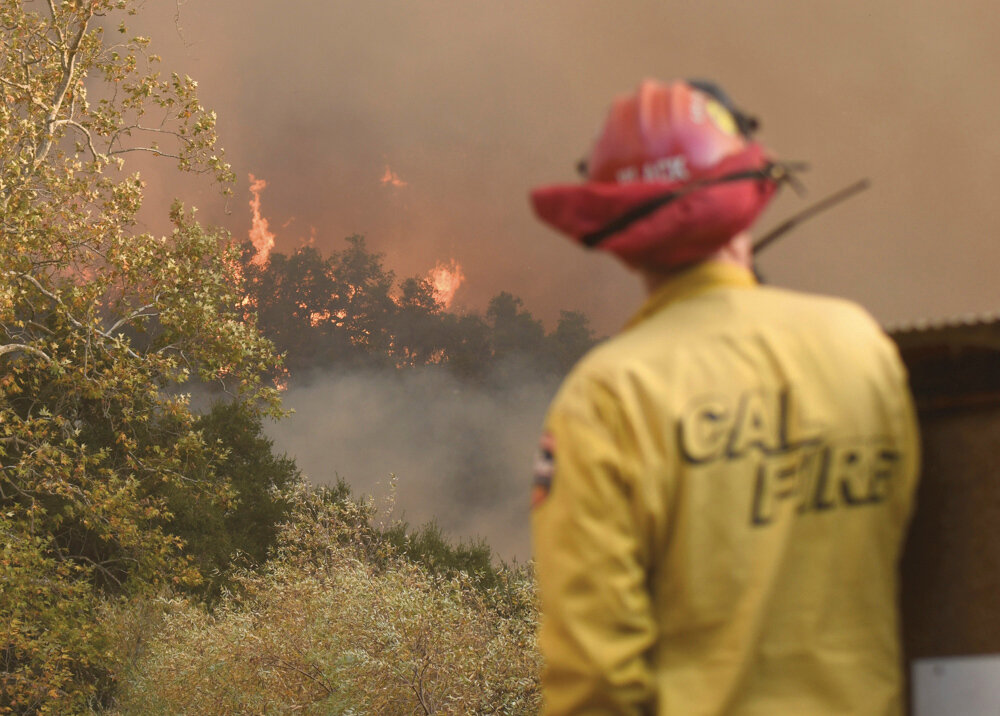
Extreme Heat Resilience
“Extreme heat causes more deaths annually than any other climate impact in California. The combination of an extreme heat wave and power outages could present a large-scale tragedy for our most vulnerable residents.”
—Em Johnson
Director of Climate Resilience, CEC
Extreme heat events are increasing in the United States and in the rest of the world. UN secretary general, António Guterres, shared his deep concern over increasingly intense and frequent heat waves by warning the public that, “The era of global warming has ended, the era of global boiling has arrived.” It is crucial now more than ever to stay informed about extreme heat and learn how to stay cool during these extreme events.
Ventura County is warming faster than any other county in the contiguous U.S., with neighboring Santa Barbara and San Luis Obispo Counties not far behind. Higher temperatures put the health and well-being of the most vulnerable — including agricultural workers, youth, and the elderly — in serious jeopardy.
WHat CEC is Doing
Community Resilience Hubs
Schools, community centers, churches, and libraries can be lifelines during climate disasters. On the California Central Coast, community resilience hubs help communities stay safe during wildfire smoke events, extreme heat, flooding, and more. Learn more.
Ventura County Heat Action Plan
Ventura County is warming faster than any other county in the U.S. Under a high carbon emissions scenario, Ventura County could endure a staggering 30 to 40 extreme heat days annually by mid-century, nearly a 500% spike compared to its historical baseline. Outdoor workers, the elderly, low-income, unhoused, and individuals with chronic health conditions are most vulnerable to extreme heat.
That’s why CEC is working on a Ventura County Heat Action Plan that will:
Identify and assess heat vulnerabilities and risk awareness
Develop and implement an educational campaign with public health
Develop a heat alert system framework with a farmworker resource hub
Fund and finance heat action
Implement a cooling kit program
Create a countywide heat action plan and adopt through county agency partners
Extreme Heat Resilience Alliance
CEC is a partner in this global initiative led by Atlantic Council’s Arsht-Rock Foundation. EHRA supports local, regional, and national governments with reducing the risks and impacts of extreme heat to their residents. Two science panels advised EHRA on its work, with fields of heat-related preparedness, governance, and response who had been working on this issue for decades. EHRA brings together experts from a range of fields including climate, meteorology, human health, and social and behavioral science. EHRA also works with governments through its Global Champions for Heat Action (GCHA) platform, which contains two tracks for engaging mayors and other decision-makers: Core Partners and Champion Cities.
CEC joins over 60 organizations and individuals whose work is critical to addressing the impacts of extreme heat including community partners, policymakers and practitioners, experts on climate science, public health, disaster response, engineering, architecture, insurance and finance. EHRA is an opportunity to share your work and expertise and learn from others but also to find great partners to advance your initiatives to build resilience to heat and new collaborative projects.
HOW TO TAKE ACTION
Learn About Extreme Heat
Learn about the work to create Community Resilience Hubs.
Read a blog about work underway to build Community Resilience Hubs.
Watch the StoryCenter series of personal stories from agricultural workers
Read Ventura County’s report Farmworkers at Risk: The Growing Dangers of Pesticides and Heat
The California Communities Extreme Heat Scoring System (CalHeatScore) is built for Californians to raise awareness of extreme heat impacts and to connect communities to locally relevant resources to keep themselves safe. Check the score.
Learn How You Can Protect Your Neighbors
Watch CEC’s inaugural Extreme Heat Forum aimed at empowering seniors to protect themselves during heat events and to engage with community resilience activities in their communities. Check out the resource tool shared at the event.



